Cwm Idwal is a geological masterpiece. A lake-bottomed, rock-walled amphitheatre of pure splendour, softened by picnic spots and skimming-stone bays. Hamper-laden tourists and dog walkers share the scenery with climbers and hillwalkers. With some of the most dramatic scenery in Snowdonia, it’s not a bad place to begin a journey.
“You see that island?” I pointed out a small rock covered in vegetation just off the shore of Llyn Idwal. “Yes,” Tom answered. “Allegedly, it serves as an example of how plant life would burgeon within Cwm Idwal if the sheep were kept out.” “That makes sense,” Tom replied. “Except,” I went on, “a few years back there was a photo of a sheep standing on it.”
We left the lakeside path and began a rising diagonal traverse up heather-covered slopes. The conversation continued. “How did it get there?” Tom asked. “No idea. Do sheep swim?” “My money’s on a local with a sense of humour. Or a big catapult…”
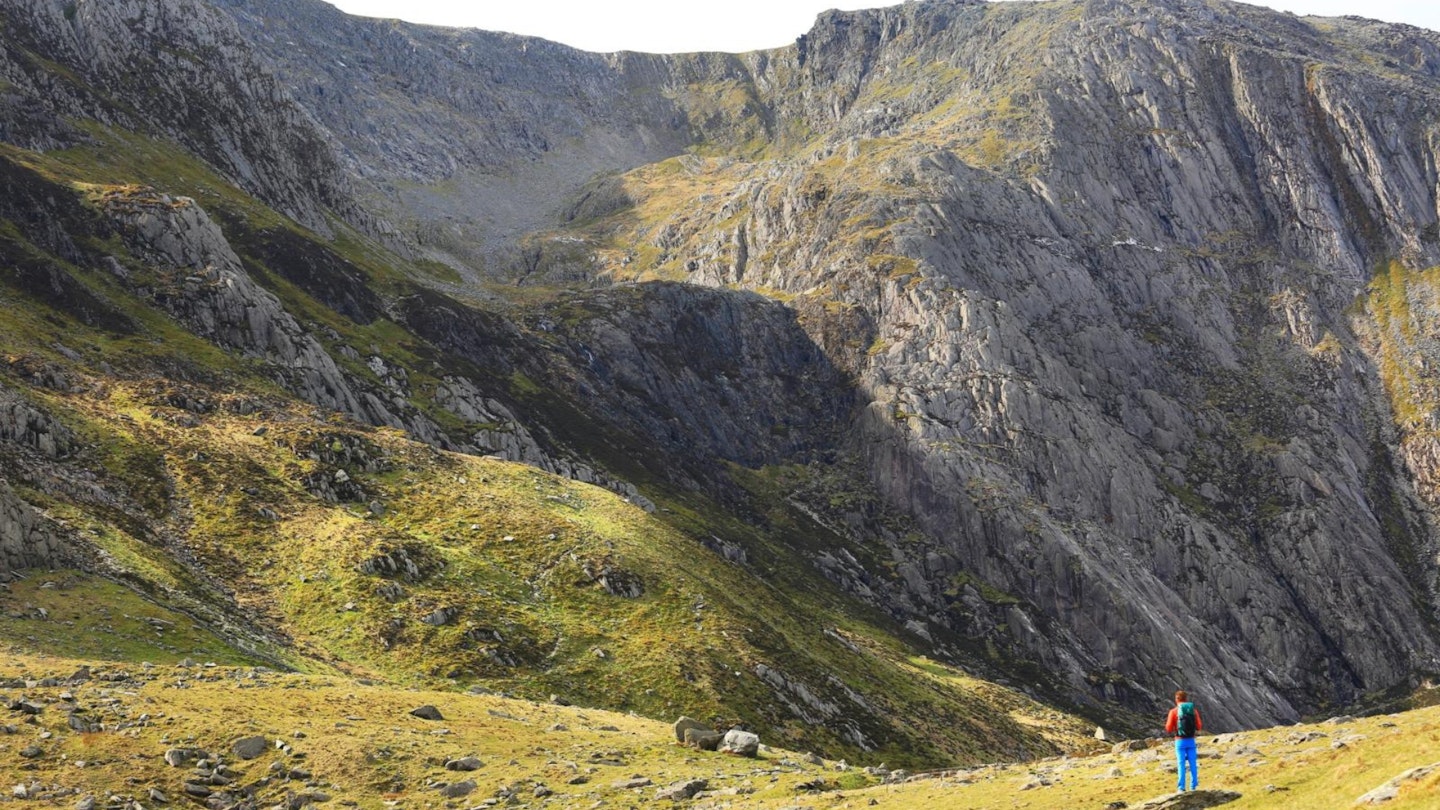
The rough path threaded up the hillside, crossing a stream before arriving into a wide, scree-scarred couloir that narrowed towards a dark, damp looking gully. Up to the right was a sheer-looking face of rock – Suicide Wall.
As you’d expect, there’s a tale to it. The story goes (or so I was told) that when it was climbed in the 1940s, upon reaching a grassy ledge halfway up the route, the lead climber found nothing to tie himself onto. So, he stuck a couple of pegs into the turf – just an inch deep or so – and tied into those before bringing the second climber up.
When the second reached the ledge he was horrified to see how little was holding the lead climber onto the wall, rightly exclaiming that, had he fallen, he would have pulled his partner off the ledge with him. This led to the first man admitting that he was in no danger of being pulled from the ledge as he’d been allowing so much slack rope that, had he fallen, the second would have hit the ground before the rope went taught.
Seniors Gully
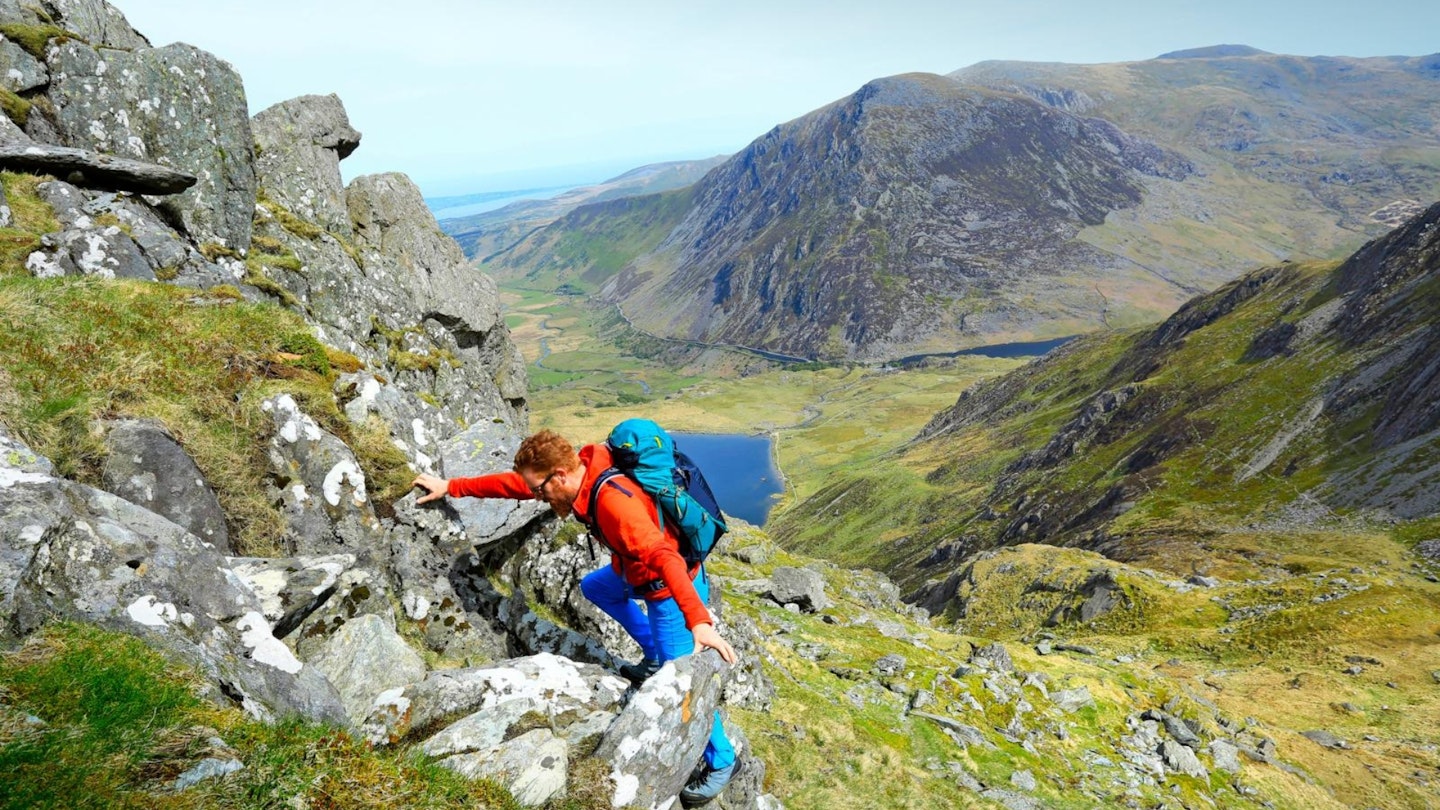
Risk, danger and a blatant disregard for one’s wellbeing were not things we intended to pursue. Our route took us straight into and up the cleft in the cliffs – Seniors Gully. If you pick up a copy of Garry Smith’s excellent book Scrambles in North Wales, you’ll find that Seniors Gully is given a scrambling grade of -1.
In other words, it’s about as easy as a scramble can be while still being a scramble (for more info, check out our expert guide to scrambling). A stream trickles down it, but unless the rain has been particularly torrential – even by Welsh standards – it’s possible to avoid getting your feet wet. The sheltered position makes it a reliable scrambling destination even when high winds put other routes out of bounds.
The gully is a series of rock steps, with safe, protected ledges between and only simple scrambling moves required to negotiate them. The holds are big and plentiful and easily found; there’s never a point where you’ll be looking around for somewhere to go.
Much of the rock is water-smoothed and looks more slippery than it is, although in a few, non-critical places, it is as slippery as it appears. About two-thirds of the way up, a thin waterfall cuts through a cleft on the right. If you fancy, you can actually step through it to stand behind the cascade.
Seniors Ridge
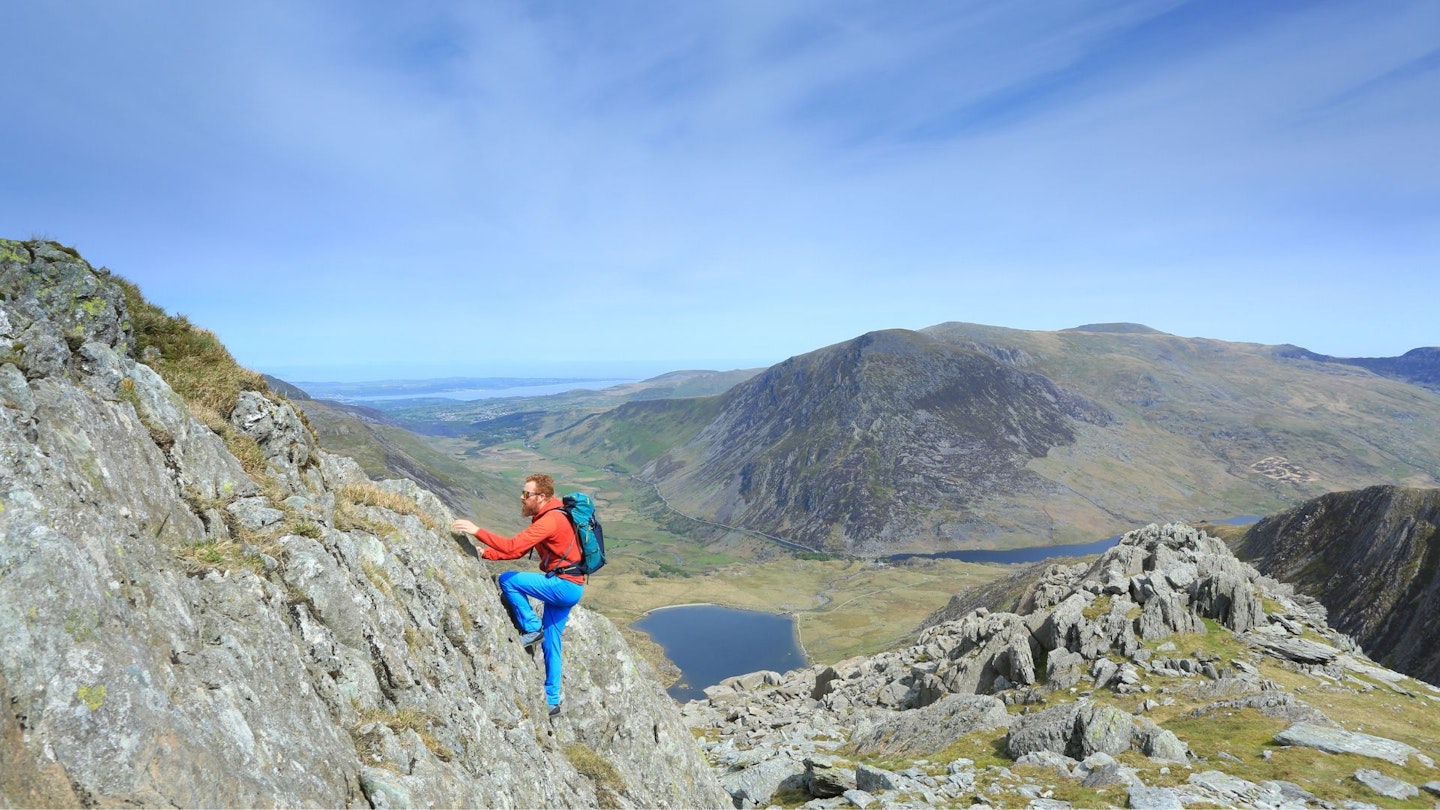
We clambered out of Seniors Gully and into Cwm Cneifion – the ‘Nameless Cwm’. It’s a high, quiet, and rarely peopled place; perfect for wild camping, although flat, dry spots aren’t as easy to come by as it initially appears.
This hanging valley is separated from Cwm Idwal by a crest of mountain that starts by the lake as the Idwal Slabs, before widening into a broad ridge that continues to climb past Cwm Cneifion to join with the cliffs of Glyder Fawr. This is Seniors Ridge.
A large, slanting, flat-faced boulder marks the entry point onto the ridge. This conveniently placed rock is pock-marked and textured, and just too tempting to pass by. “Fancy a clamber?” I asked. “Why not?” Tom replied, and we spent a few minutes bouldering about on the natural climbing wall. We’d not started particularly early that morning, but there was still plenty of the day left; so clear and efficient is the route to and through Seniors Gully that very little time had been wasted.
The path up Seniors Ridge is just about traceable from start to finish. In a couple of places it braids, weaving through or around rock outcrops, but it’s never lost for long. In the main, it’s just elevated walking.
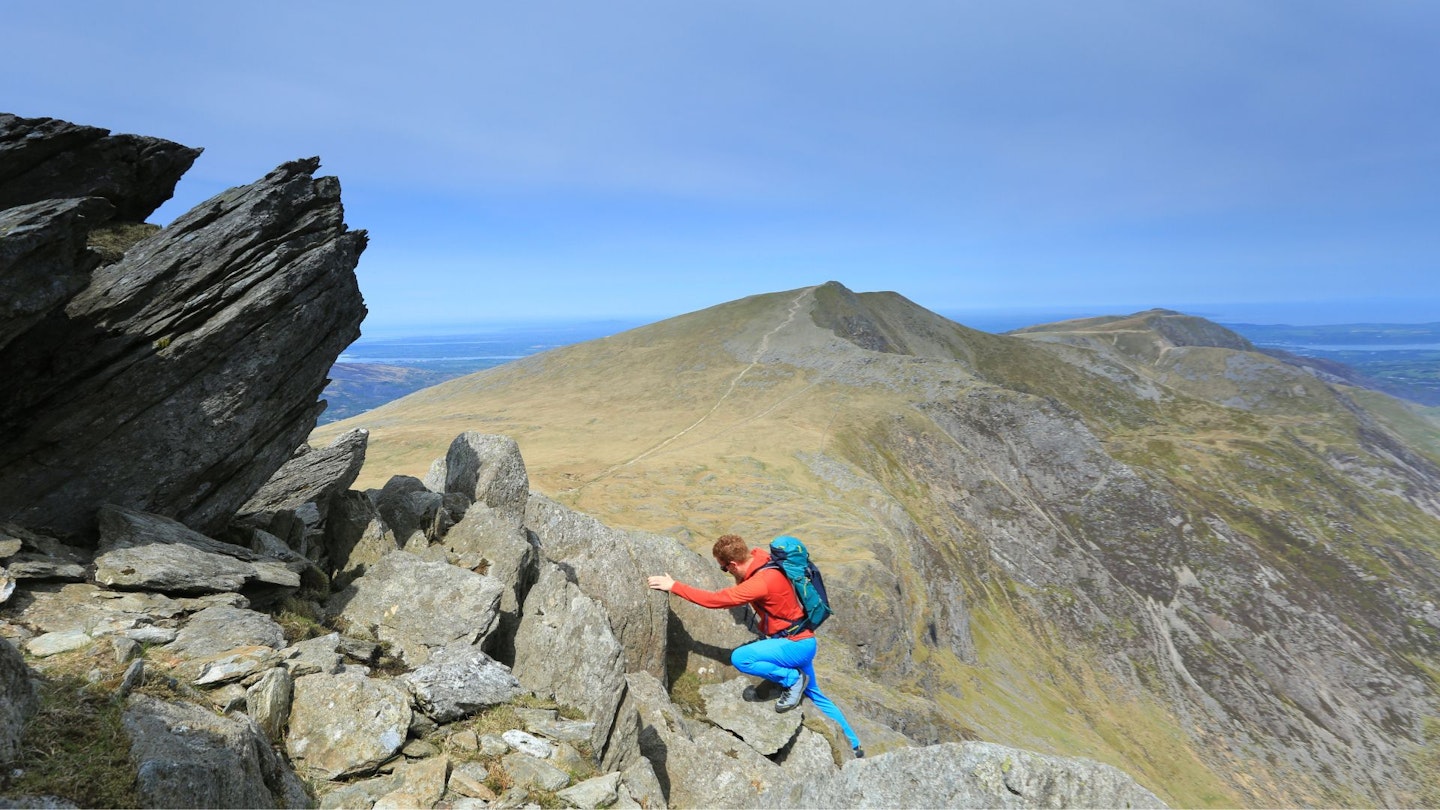
As height is gained, it’s the drop back into Cwm Cneifion that’s most eye-catching. On the opposite side of the cwm, the Cneifion Arête – an Alpine-style grade 3 scramble up a slanting knife edge – becomes increasingly impressive as it’s seen from higher and higher up the mountain.
There are one or two challenges to be faced on the ascent. A few easy moves are quite airy – sections of on-the-edge walking with stern drops below. Other obstacles are more difficult, but much less nervy – short rock steps demanding some hands-on clambering, but well away from any real dangers.
Many guides don’t even give Seniors Ridge a scrambling grade, and those that do put it as a low 1. But that shouldn’t detract from the overall quality of the route. In truth, there’s loads of scrambling to be found here if you go looking for it. There’s plenty of exposure too, if that’s what you want.
To the left, the gape of Cwm Cneifion is a constant companion, and over to the right, away from the main path for the most part, the Upper Cliff of Glyder Fawr provides an even greater sense of height. And if you don’t want it, it’s easily avoided by sticking near the middle of the crest.
Spectacular summit
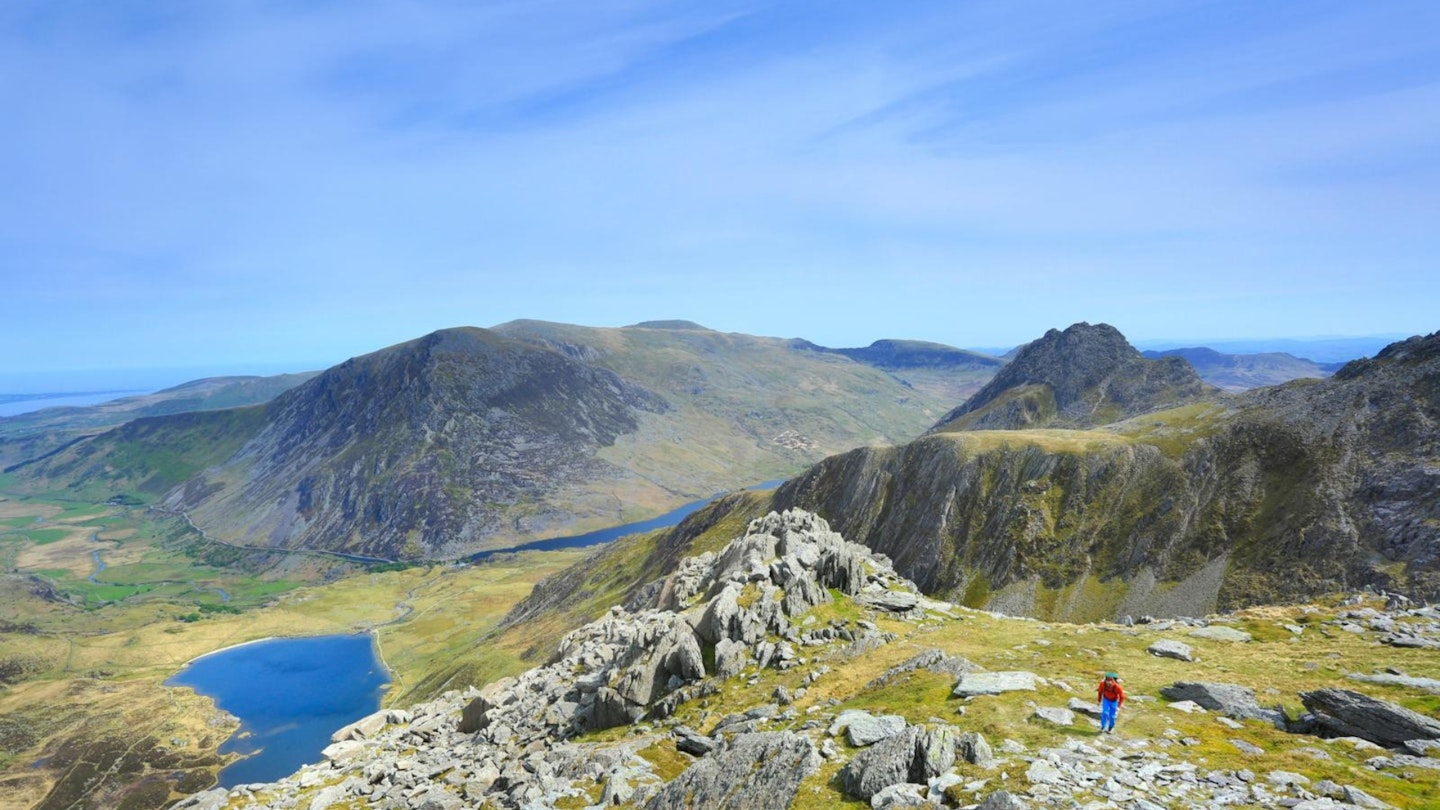
Llyn Idwal silvered in the light below us as we neared the top of the ridge. Here it merged seamlessly into Glyder Fawr’s boulder-strewn summit; the grassy expanses that blanket much of Seniors Ridge giving way entirely to fractured rock.
Beyond the reach of Cwm Idwal, Pen yr Ole Wen stood tall over the elbow of the Ogwen Valley as if preaching to the peaks crowded around the cwms of the Glyderau. Two outcrops, a matter of metres apart, occupy the summit of Glyder Fawr, separated by a shallow scoop. It’s not immediately obvious which is the highest, but we made for the northern top and took a seat by its spiked rocks to devour the scenery sweeping to the edge of the world in every direction.
The combination of Seniors Gully and Seniors Ridge provides a relatively rare opportunity. Scrambles that climb nearly 500m and end on the summit of a 1000m peak are not easy to come by. Let alone ones that are inviting enough for new scramble-seekers to contemplate, but also provide enough entertainment and scenery along the way for regular scramblers to enjoy.
The Seniors do just that. Add them to your summer plans. Consider a leisurely start from Ogwen Valley, a relaxed clamber through Seniors Gully, a short respite within Cwm Cneifion, a pleasurable view-drenched ascent up Seniors Ridge, an airy panorama atop Glyder Fawr, an engaging descent via the evocative Devil’s Kitchen – all wrapped up by a cooling toe dip in the crystal waters of Llyn Idwal in the belly of the most picturesque cwm in Snowdonia. It’s not a bad place to end a journey.
Starter scrambles in Snowdonia
Whether you just want to get your scrambling muscles warmed up, or are looking for a suitable route for your first-ever grapple with rock, here are three more easy-going Snowdonian options.
Daear Ddu Ridge
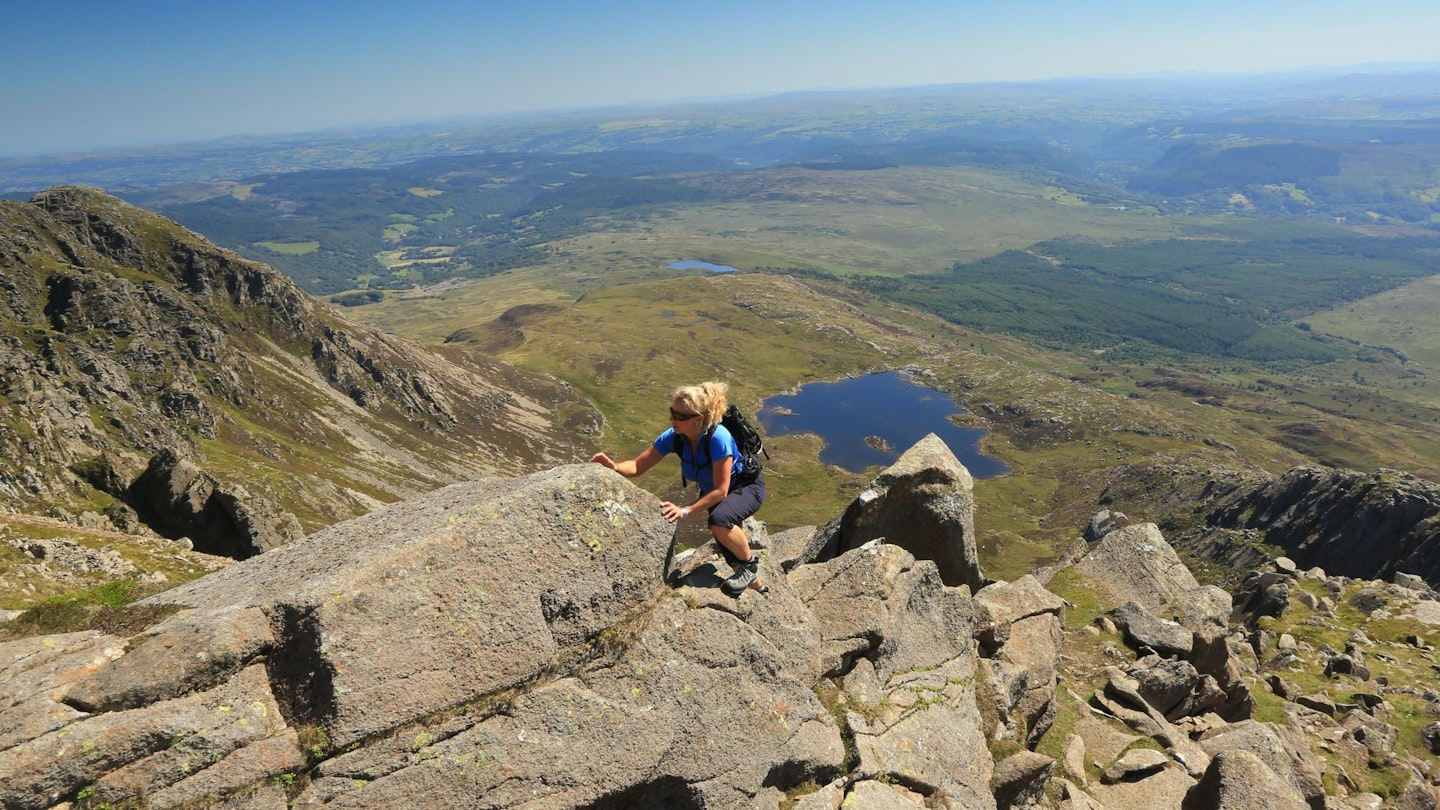
The east ridge of Moel Siabod is a great scramble where the risks are low, but the rewards are high. The scrambling is easy, route-finding not a problem, and it ends at one of the best viewpoints in Snowdonia – the summit of Moel Siabod, from where the Snowdon massif dominates the panorama.
Find our Moel Siabod via Daer Ddu Ridge route here.
Y Gribin
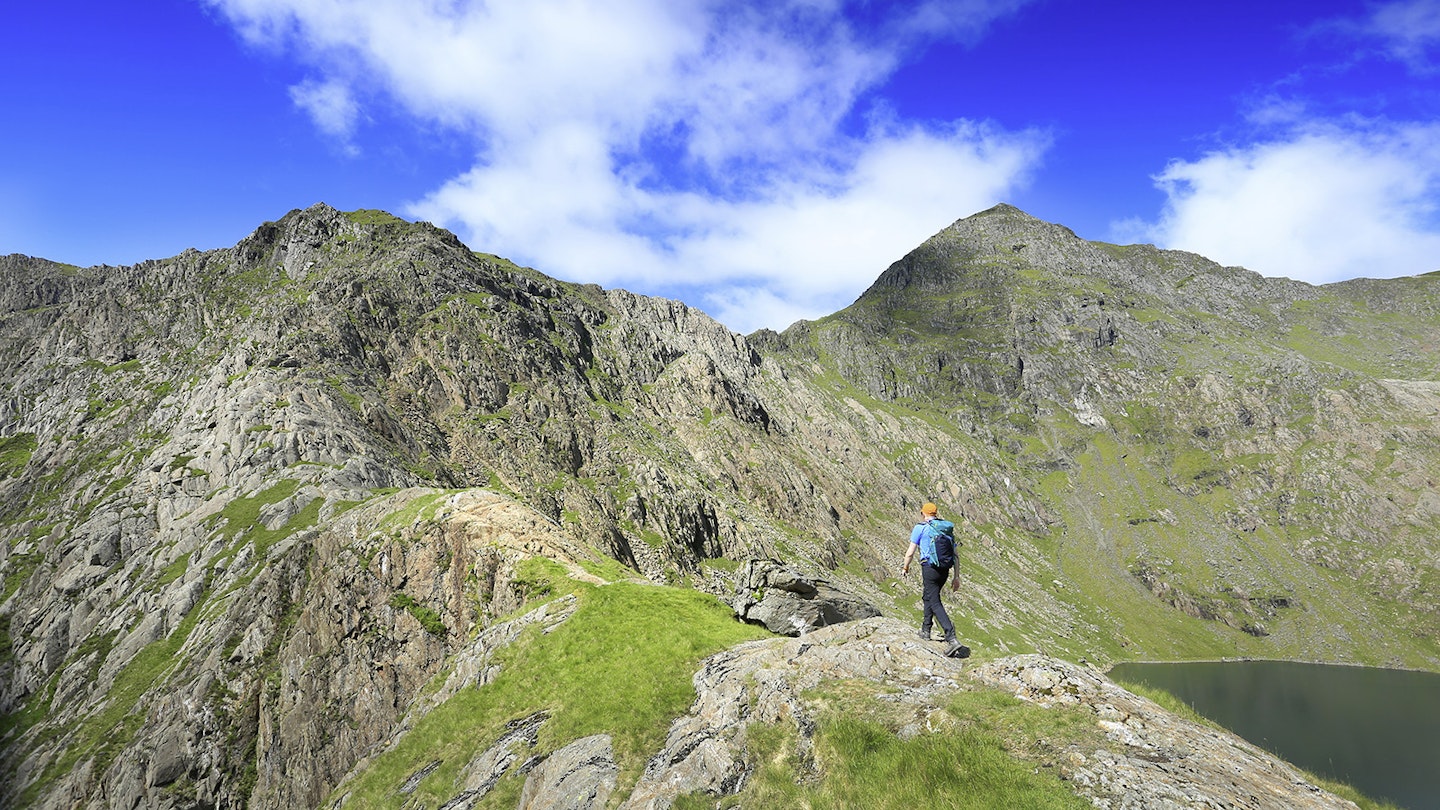
This neighbour to the Seniors starts from Cwm Bochlwyd (just next door to Cwm Idwal) and finishes high on Glyder Fawr, with the immense northern crags of Glyder Fach as its backdrop. The best scrambling is near the top – a great finale to a rewarding ascent.
Check out how to scramble Y Gribin ridge.
Lliwedd Traverse
Although regularly bagged as part of the Snowdon Horseshoe, Lliwedd is a handsome peak that’s a worthy endeavour on its own. An ascent and traverse of its west and east summits provides a wealth of scrambling opportunities, along with some severe but optional exposure.
About the author
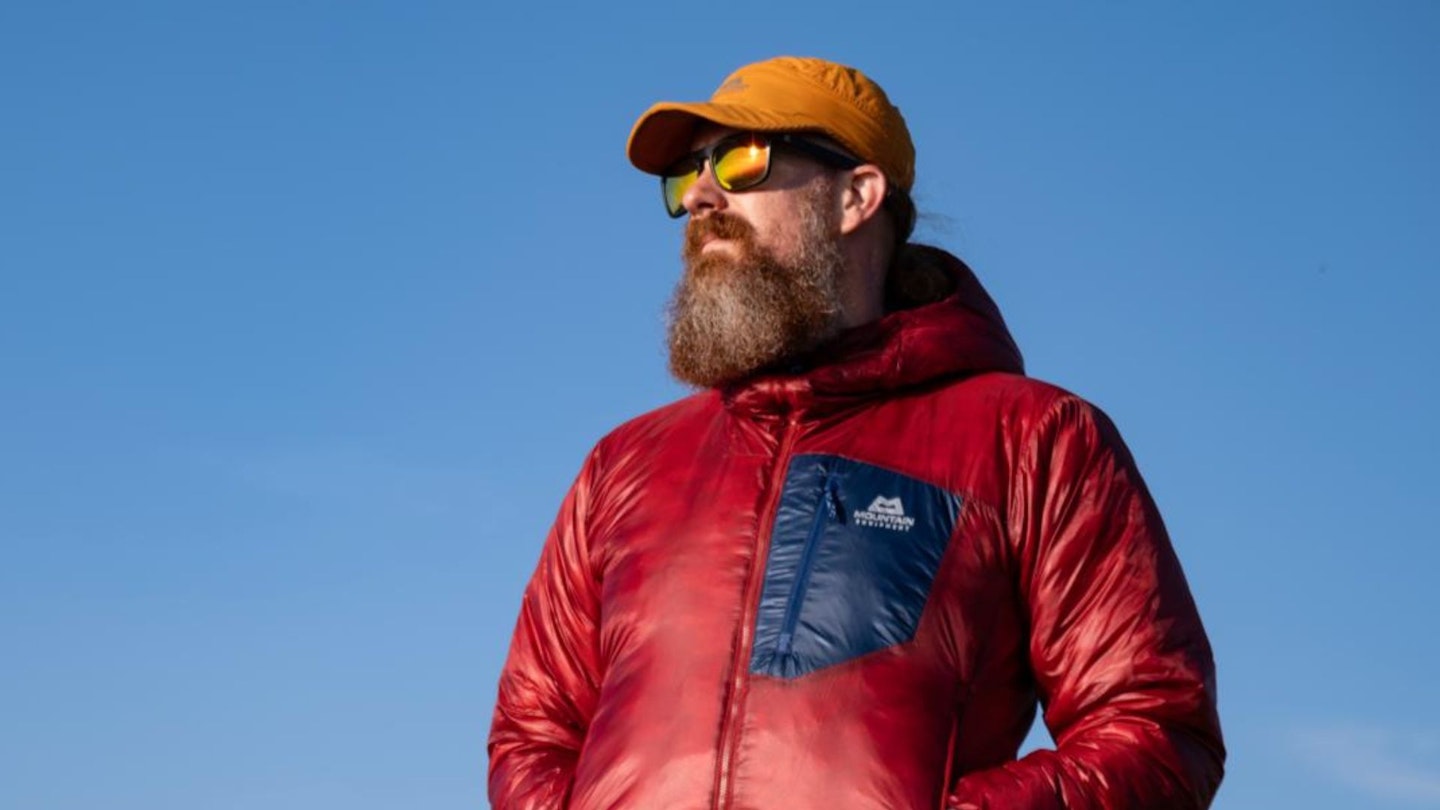
Ben Weeks has been with Trail magazine for over 10 years and is our main point of contact for all gear reviews. As well as being a hugely talented writer and photographer, Ben is also a qualified Mountain Leader and Climbing Instructor.
